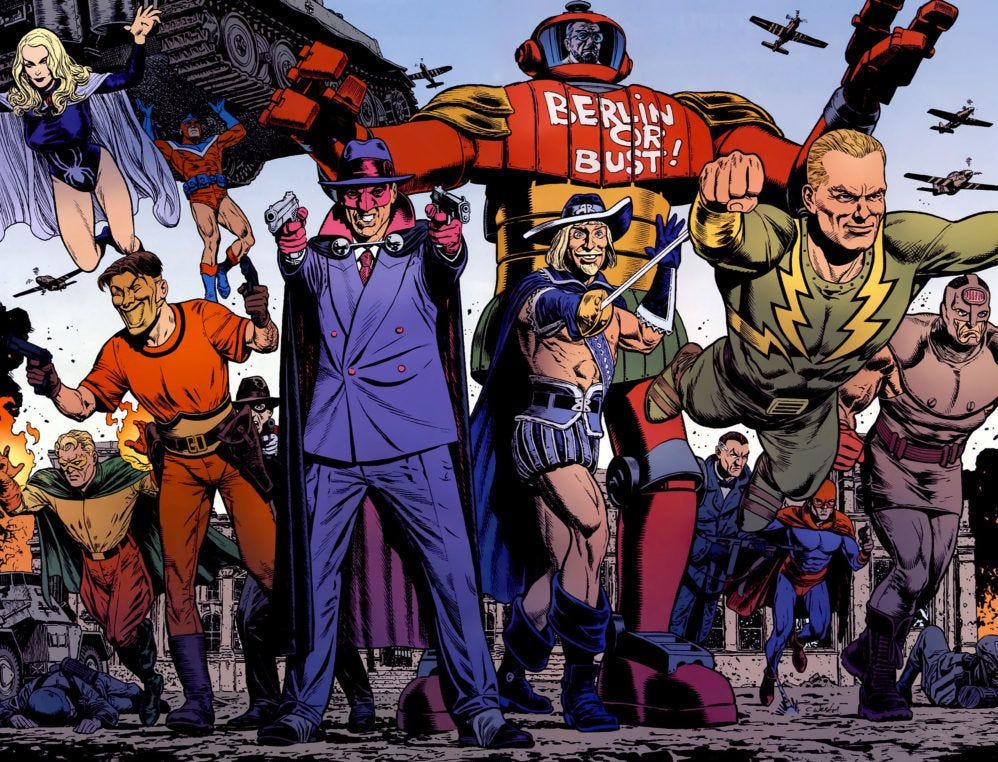Marvel the Creativity Nazi and Kevin Feige
Click to read the full story: Marvel the Creativity Nazi and Kevin Feige

Marvel Studios/Disney has created a real functioning universe for itself out of various Marvel Comics properties such as the Avengers, Guardian of the Galaxy, SHIELD, Inhumans, Daredevil, Punisher and Jessica Jones. More properties will be added to the mix such as Dr. Strange, Black Panther, Spider-Man and Cloak and Dagger. We all know the idea is to have them all live within one universe where what happens in one of their stories directly or indirectly affects another and where almost infinite exciting combinations can happen to keep the money flowing as long as the superhero genre is alive. Such a universe has to be a well-oiled machine where everyone involved needs to be schooled and have to collaborate with each other. Mavericks who do not answer to the collective shall be booted out.
Yes, Marvel Studios has a reputation for being a creative Nazi. But as stated above, any new material must fit in to the gigantic jigsaw puzzle to create a recognizable picture. Imagine assembling the puzzle of a field of violets with a fitting piece but that of a large calculator somewhere a bit off center plus a bunch of other junk elsewhere. In the mind of Kevin Feige, everything is all set. Marvel’s Infinity War is coming, and all films before that have already been planned to follow a specific flow or plotline. Directors and screenwriters can adjust here and there, but the whole exercise needs to follow some basic rules. For example, TV shows cannot create events so massive that it will affect the feature films unless Marvel allows it. TV shows cannot use and kill a certain character because that character has already been tapped in a future film. A movie character cannot appear in a TV show and get killed or have a traumatic experience unless Marvel allows it.
Such rules can either be a bane or a challenge to creative artists. Kind of like forcing an oil painter to use watercolor or forcing Picasso to paint with realism. The experience can be stifling for free and adaptive artists. Josh Whedon, the man responsible for the blockbuster first Avengers film, left the studio after Avengers: Age of Ultron. Why AOU was not as great as the first film could be chalked up to creative differences between him and Marvel. The film may have needed to follow something specific which in Josh Whedon’s mind, he cannot deliver without compromise. The movie was good overall but the experience was said to have left Mr. Whedon exhausted.
The same happened to Edgar Wright, the first director for the Ant-Man film. What’s different here is that he’s been onboard the Ant-Man project even before the Marvel Cinematic Universe was born. He and Joe Cornish had it all laid out. They were enthusiastic.
“The thing I like about Ant-Man is that it’s not like a secret power, there’s no supernatural element, or it’s not a genetic thing. There’re no gamma rays. It’s just like the suit and the gas, so in that sense, it really appealed to me in terms that we could do something high-concept, really visual, cross-genre, sort of an action and special effects bonanza, but funny as well.”
— Screenwriter Edgar Wright
They were ready to make adjustments just in case but by the time the film was ready to be made, the MCU had been built, and many changes may have had to be made that didn’t agree with Mr. Wright. Edgar Wright left the project which almost spelled doom for the film. Fortunately, Director Peyton Reed gave the world a satisfying film out of a relatively unknown hero.
“…much of the movie will still be based very much on [Wright and Cornish’s] draft and the DNA of what Edgar has created up to this point…[Reed] wanted to be sure that he wasn’t just inheriting something or following someone else’s lead. Or wasn’t inheriting something that the evil studio had watered down to be something bad…He looked at everything, he talked with us, and he said ‘Number one, I agree with the direction you’re going in. And number two, I can add to it.’”
— Kevin Feige, head of Marvel Studios
Thus proves that Marvel had different ideas from Edgar Wright’s supposedly independent film. As for Joss Whedon, he was already at odds with Marvel during post-production. Marvel and many fans didn’t agree with his idea of Hawkeye being married with his family in seclusion on a farm. But not all of Marvel’s ideas are gold as fans didn’t like how Thor’s cave scene was treated. It could have been longer as Joss wanted it to be. Outside restrictions were also at play as Joss wanted Spider-Man and Captain Marvel but they were still a long time coming.
Whatever the MCU’s imperfections in the eyes of its writers and directors, the reality is that it’s an enormous money-making machine that others are now trying to emulate. It makes hit out of publicly unknown heroes in a world where the public once only knew Superman, Batman, Wonder Woman, The Incredible Hulk and Spider-Man. This machine is working so well, it would be a shame to break it by tossing a colorful idealistic wrench inside. Those who want to join in, read the manual and get with the program.
The post Marvel the Creativity Nazi and Kevin Feige appeared first on Movie TV Tech Geeks News By: Marius Manuella
